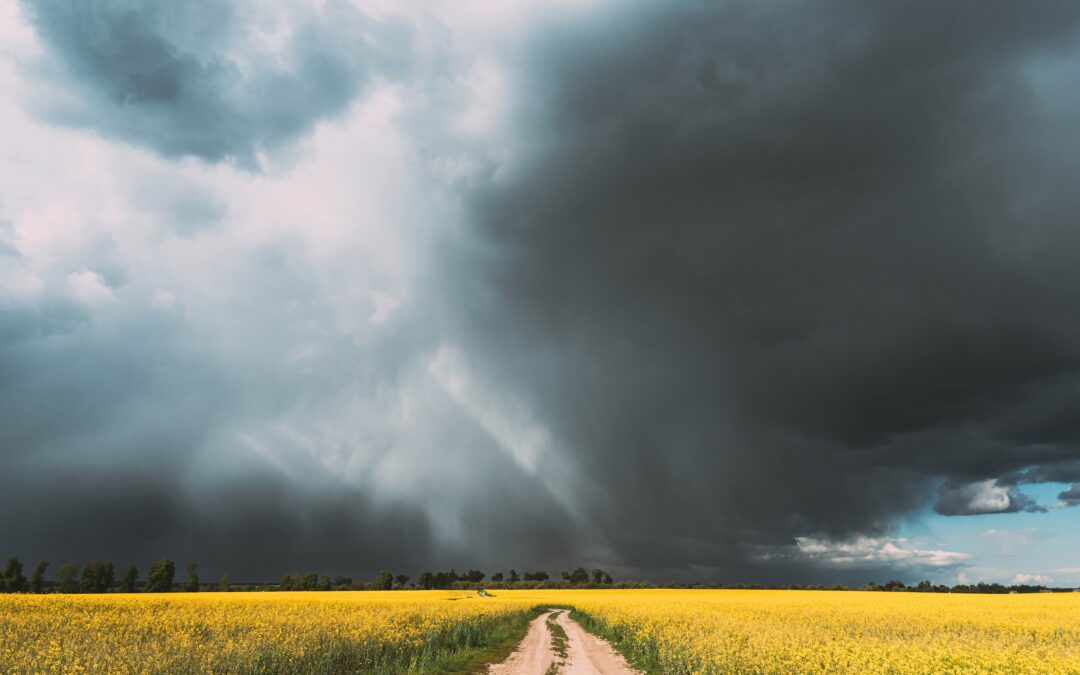Discussions of MacKenzie Scott’s unconventional approach to giving tend to devolve into binaries. Scott’s doling out of massive, unrestricted gifts — some $14 billion to 1,600 nonprofits so far — is presented by some as the philanthropic holy grail, to be emulated by all. Others, including many foundation staff with whom we have talked, have (often quietly) dissed her approach as un-strategic or, worse, likely to yield myriad unintended negative consequences.
These simplistic narratives are unhelpful.
Let’s dispense with the first narrative first. Scott’s approach is unique to her personal context — few people on earth have her resources and the accompanying access to outsourced vetting of potential grantees. Moreover, she, unlike many donors, appears more interested in building strong organizations across a wide range of areas of work than focusing in on a particular issue or problem, like climate change or a specific disease. Yet there is, as we imagine she might agree, a place for foundations and donors that develop expertise in specific areas and there is even a place for program-restricted grants (though they shouldn’t be the default, as they have been for many foundations).
So, it’s just overly simplistic to suggest, as some have, that Scott’s giving somehow renders staffed foundations obsolete or that it is something all should emulate — even as her approach does hold lessons for donors of all stripes (more on that in a moment).
Now to the second narrative. We have talked with foundation staff who have told us Scott’s approach is “a disaster.” When we push to understand better, we hear worries about three kinds of unintended negative consequences: 1) her grantees’ ability to responsibly steward resources, or make a continued case for support from past (or potential) funders; 2) the fate of organizations that didn’t receive funding in fields or geographies Scott supports (both that they don’t know how to approach Scott and that the lack of a grant from Scott could be seen as a death knell); 3) and, related, the relationships among nonprofits as well as between nonprofits and their funders in the fields in which she makes grants.
On the third point, we have even heard some foundation leaders confess that they’re concerned their own influence on their grantees that received funding from Scott will be diminished because these nonprofits will be less dependent on them and, therefore, less malleable. (Really.) This strikes us as likely more of an intended consequence than an unintended one (given Scott’s references to “yielding” power) and, perhaps not surprisingly, recipient nonprofits themselves tend to see this rather differently: as a healthy and overdue re-balancing.
Regardless, these issues are worth studying, which is why the Center for Effective Philanthropy (CEP) has set out on a three-year effort to look at the effects of Scott’s giving. We have completed only the first year of this study, and so there is much yet to learn, but we have already developed some strong evidence to suggest that the worries about unintended negative consequences are, at least so far, not coming to fruition.
Moreover, we think some lessons that apply to foundations as well as individual donors of various stripes are clear already. Even those who have deep concerns or serious critiques of Scott should, we hope, be able to gain some useful lessons from what she’s doing. We’re not suggesting everyone emulate Scott. We’re suggesting everyone can learn something from what is the most interesting natural experiment we have seen in our time working in philanthropy.
The first lesson is that giving big to trusted nonprofit organizations and their leaders is experienced as transformative by recipients. “Disbelief, amazement,” was how one nonprofit leader described her reaction to receiving a gift from Scott. “Then, a deep sense of humility and duty — that we were going to be able to help our communities through the pandemic, that we could do big things … at such a critical time. And we did.”
Contrary to widespread conventions in charitable giving (that donors should focus on how much an organization spends on “overhead” and even restrict their giving to the latter) Scott has allowed organizations to decide how to allocate her gifts. She clearly recognizes the inanity of an approach — common among everyday givers, the mega-wealthy, and foundations — in which donors say, “I want to support the food pantry, but only the cost of the food, not the rent for the space or the salaries for the staff.”
In our research, we found that recipient organizations are thoughtfully allocating the gifts across various efforts and extending and deepening their reach. Disproving fears that nonprofits would be overwhelmed by these gifts, leaders of these organizations tell us the needs were clear: it wasn’t hard at all for them to figure out how to allocate the funds.
The lesson here? For those organizations whose goals overlap with yours and who have earned your trust, reward them with the biggest unrestricted gift you can give. Doing so will increase their chances of success in pursuing your shared goals.
The second, related, lesson of Scott’s approach is to recognize that the health of nonprofit organizations matters — and working to strengthen them can be strategic. Other donors have told us Scott’s approach is “un-strategic” because she hasn’t specified end goals she is pursuing: reduce hunger by X percent or improve graduation rates by Y percent.
But, in fact, Scott’s goals, as we mentioned earlier, seem to be about strengthening institutions — such as historically black colleges and universities (HBCUs) or programs that work with children in impoverished areas — that are working effectively on vital issues. Looked at that way, Scott’s giving is highly strategic.
Scott appears to recognize that we need a strong ecosystem of nonprofit organizations working on crucial issues over a long time horizon. Her gifts to nonprofits during her first year of giving were $8 million at the median, compared to a median gift from staffed foundations of $100,000. It is not surprising, then, that leaders said Scott’s gifts were transformational.
For the many foundations and donors we encounter who tell us “we’re not interested in supporting organizations, just programs,” Scott’s approach presents a healthy challenge. Programs can only exist within organizations, after all.
A third lesson is that a nonprofit’s people — often disparaged or seen (absurdly) as “bloat” — matter tremendously. The nonprofit leaders we surveyed said Scott’s approach changed their mindsets: emboldening them to ask for what they needed and making them feel respected for their work in a way that they often didn’t.
“It was a rush of affirmation that we had never before received,” one leader told us. “Someone was looking out for us.” This came through especially powerfully for the leaders of color we talked with, who often presented their experience with Scott as a contrast to the distrust and disregard they frequently experience with other donors.
Indeed, the sense of elation and empowerment that came through was both inspiring and depressing. Inspiring in how it shifted leaders’ mindsets; depressing in what a contrast it presented to the day-to-day experiences of nonprofit leaders and, frankly, the routine humiliations that often accompany fundraising.
All of us would be wise to recognize, as Scott has, that leadership of nonprofits is uniquely challenging, requiring everything it takes to lead an equivalent sized business, and a lot more. Yet, too often, nonprofits and their staff are treated with suspicion or even downright disrespect.
A fourth lesson is that if we care about equity — racial equity, gender equity, equity for LGBTQ+ people, equity for all — we can (and must) use our philanthropic giving to aggressively pursue those goals. “Funders rarely want to fund social justice endeavors because they are hard to measure from an impact standpoint,” one leader told us. Scott has given to many organizations focused on these issues and their leaders say the gift freed them up to take risks they might not otherwise have taken.
She has also funded organizations whose leadership, at least for the sample we analyzed, was significantly more racially diverse than the leadership of foundation-funded nonprofits. Here, too, Scott’s giving represents a challenge to the default approach of foundations, whose grantees are, judging by CEP’s data, nearly 80 percent white.
Again, we are not arguing that Scott’s approach is perfect. Nonprofits that have not received funding from her are frustrated by a lack of clarity about how to make their case for support, which may partly explain Scott’s recent announcement that there will be future open grant proposal opportunities. Some have critiqued her for a perceived lack of transparency, though her just-released website is a step in the right direction.
But there is both a humility and a boldness in her approach that can instruct all of us. The humility shows through in the trust she places in nonprofits and their leaders to know best what their communities need. The boldness comes in the sheer size and scale of her giving, which should put to shame many of her fellow billionaires.
Unlike many of her fellow giving pledge signatories, Scott is on track to rapidly meet the threshold of giving away half her net worth and, indeed, seems well on her way to fulfill her promise to “keep at it until the safe is empty.” Scott closed her Medium post announcing her latest round of gifts in November with these powerful words: “I needn’t ask those I care about what to say to them, or what to do for them. I can share what I have with them to stand behind them as they speak and act for themselves.”
We hope that even the skeptics can take something away from Scott’s uncommon humility and generosity.
Phil Buchanan is president of the Center for Effective Philanthropy (CEP) and author of Giving Done Right: Effective Philanthropy and Making Every Dollar Count. Ellie Buteau, PhD is director of research projects and special advisor on research methodology and analysis at CEP. They are co-authors of Giving Big a report on MacKenzie Scott’s giving and its effects.


